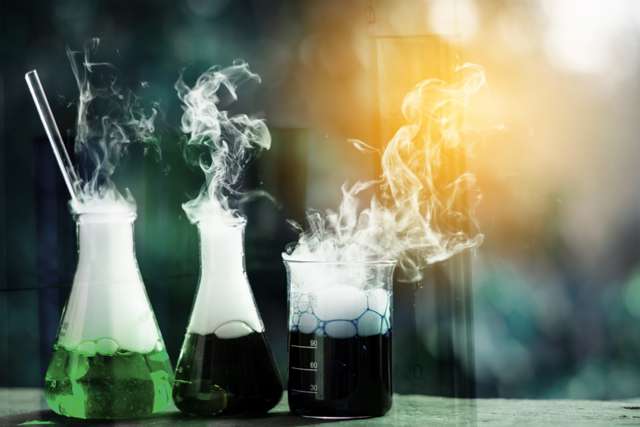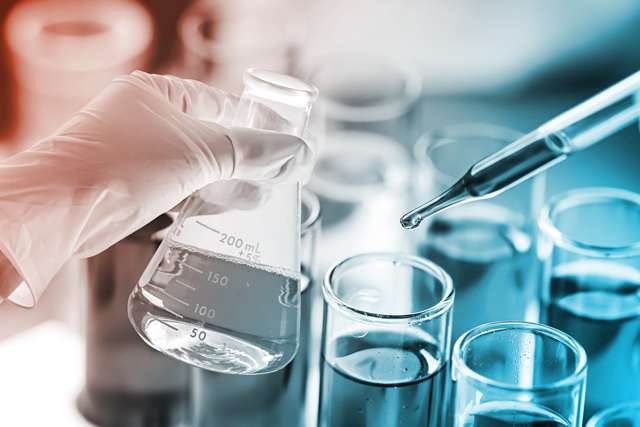How to Measure the Color of Harsh Liquid Chemical Samples
To solve the challenges inherent to harsh liquid chemicals, manufacturers need to refine their sample preparation protocol and use spectrophotometers that are durable enough to withstand a caustic or corrosive sample. This is where the Vista transmission color spectrophotometer truly shines. The instrument has sealed sample compartments, a sloped design, and anodized materials to meet the many needs of the chemical industry. To use the Vista to improve your color quality control testing process, follow the three steps below:
Step 1: Refine Your Sample Preparation Process
By wearing protective clothing and goggles as well as ensuring that the lab is properly ventilated, you can make the testing process safer when handling caustic chemical samples. The Occupational Safety and Health Administration (OSHA) has a list of guidelines for proper sample preparation that you can follow in order to safely measure the color of your products, including having emergency facilities in the event of a chemical spill or accidental exposure to the sample.4
Step 2: Use a Durable Spectrophotometer
Once you have your safety measures and sample preparation protocols in place, you should ensure that your spectrophotometer is capable of holding and testing a caustic sample. Not all spectrophotometers are able to withstand exposure to these types of substances. That’s because certain parts of the spectrophotometer like metal components and paper backing materials can be severely damaged by caustic liquids.
For example, a sample that’s highly acidic could cause rapid oxidation in some metals.5 This means that if you place your acidic sample inside a sample holder with metal parts or you accidentally spill the sample onto a metal section of your spectrophotometer, the liquid will corrode your equipment, leading to permanent damage or costly repairs. Moreover, some caustic chemicals release a corrosive vapor over time that can damage your equipment. This happens if your liquid sample spills and collects inside the crevices of your spectrophotometer. Because these areas are so difficult to clean, the corrosive liquid could continue to accumulate inside your instrument, slowly damaging it over time.
The Vista is the best transmission color spectrophotometer to use to solve this complex set of challenges. The instrument addresses these problems in three ways:
- The instrument is sealed and electronics and optics would not be affected by small spills.
- The Vista’s transmission compartment can be sloped at a forward angle. This unique shape prevents liquid samples from collecting inside the compartment and allowing you to quickly wipe up the spilled sample.
- The Vista is equipped with an anodized metal compartment. The anodized metal prevents the compartment from being easily damaged by corrosive materials. When a metal is anodized, it’s submerged in an electrolytic solution, causing the metal to form a thick layer of protective oxide on its surface.6 As a result of this protective oxide layer, the Vista can easily cope with chemical spills, even from highly corrosive materials that damage most other metals and instruments.
Step 3: Measure Color and Haze Simultaneously to Limit Operator Exposure Time
With a corrosion-resistant spectrophotometer, you can safely measure most types of liquid samples, including highly caustic chemicals. However, while the instrument itself is more resistant to damage, you still need to ensure that your operators limit their exposure to these caustic chemical samples as well. To do this, you can use the Vista’s simultaneous transmission color and haze measurements. This feature allows you to test both the color of your chemical products and your product’s clarity at the same time. Using simultaneous haze and color measurement, you will limit your operator’s exposure to the caustic liquid sample, as your operator only has to take one measurement. Your staff will spend less time preparing caustic samples, and they won’t have to take separate measurements to test for color and sample clarity.
Whether your products are non-corrosive solvents or abrasive industrial-grade cleaners, a durable spectrophotometer will help you get the most accurate, reliable color measurement results. The flexibility and durability of instruments like the Vista could dramatically improve your lab’s testing process, allowing you to refine your products and maintain high quality standards.
HunterLab Reliability
For more than 60 years, HunterLab has worked closely with chemical manufacturers to find solutions to some of the industry’s most pressing needs. Our most durable transmission color spectrophotometer, the Vista, includes a number of advanced features that benefit the chemical industry, including a state-of-the-art anodized transmission compartment, multiple data views, and the most up to date color scales and indices. Contact us today to find out more about the Vista and the many other cutting-edge spectrophotometers in our line.





